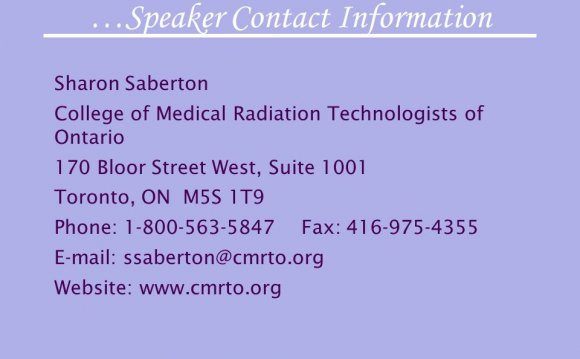
Career Opportunities
Educated in anatomy and physiology, patient positioning, equipment protocols, radiation safety and protection, and fundamental patient care skills, Radiological Technologists often specialize in a particular area of diagnostic imaging. They work in a variety of different environments, including:
Practicing and providing care to patients in hospitals and private clinics
Contributing to scientific advances within the profession by performing research studies
Regulating radiation safety practices and working for government and other agencies
Advancing into administrative and management positions
Digital imaging systems administration
Specializing in sales or new product development with commercial companies
Educating future professionals in the medical radiation sciences
The primary focus of Radiological Technology is to provide optimal care for the patient in a fast-paced environment. In addition to working in the Imaging Departments, Radiological Technologists working in a hospital may be required to provide imaging services in the Operating Rooms, the Emergency Department, at the patient’s bedside or other areas of the hospital. Radiological Technologists can go on to specialize in Magnetic Resonance Imaging (MRI), Medical Sonography, and Imaging Informatics.
Radiological Technology graduates are eligible to write the national certification examinations conducted by the Canadian Association of Medical Radiation Technologists (CAMRT). Certification qualifies graduates to work across Canada and allows them to apply for registration with the College of Medical Radiation Technologists of Ontario (CMRTO).
Consider Radiological Technology if you:
are interested in operating sophisticated imaging technology
enjoy working with people
have good interpersonal skills including the ability to listen carefully and provide clear instructions
enjoy a variety of work
Radiological technology is the production of medical images commonly called X-rays, of internal organs and structures. They are produced by passing a small, highly controlled amount of radiation through the human body, and capturing the resulting image on an image recording device. When X-rays penetrate the body, they are absorbed in varying amounts by different parts of the anatomy. Bones, for example, will absorb much of the radiation and, therefore, appear white or light gray on the image, whereas soft tissue absorbs little radiation and appears dark.
Contrast media are sometimes used to enhance certain organs and structures that otherwise are not visualized on medical X-ray images.
The field of radiological technology also includes therapeutic procedures, often referred to as interventional radiology. Interventional Radiology is used in the detection, diagnosis and treatment of injury and disease.
Some Examples of Radiological Technology:
General Radiology is used to detect bone fractures and pathological processes, locate foreign objects in the body, and demonstrate the relationship between bone and soft tissue.
Fluoroscopy produces real-time X-ray images. Fluoroscopy is used in conjunction with contrast media to enable visualization of internal structures such as the gastrointestinal tract, blood vessels and various organs during diagnostic and therapeutic procedures. Fluoroscopy is also performed in the operating room during surgery providing the surgeon visual guidance for various surgical procedures.
Computerized Tomography produces cross-sectional and 3-dimensional images of various structures in the body
Angiography uses contrast agents to examine the heart and blood vessels
Mammography produces radiographic images of the breast to detect cancer in its earliest stages
Radiological Technologists play an integral role in the detection of injury and disease; they are the medical personnel who perform diagnostic imaging examinations, including mammography and computerized tomography.
Radiation Technologist are detail-oriented and enjoy applying their knowledge of anatomy, physiology, and mathematics; Radiological Technologists are responsible for accurately positioning patients and ensuring that a quality diagnostic image is produced.
Radiological Technologists work closely with patients, doctors, and other health professionals as part of the interdisciplinary health care team.
Radiological Technologists use cutting-edge medical imaging technology and advanced computer systems to produce and enhance radiographic images.
Radiological technology offers many areas of specialization
computed tomography (CT)
diagnostic visceral and peripheral angiography with interventional radiology














